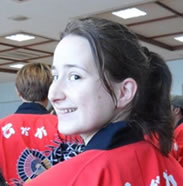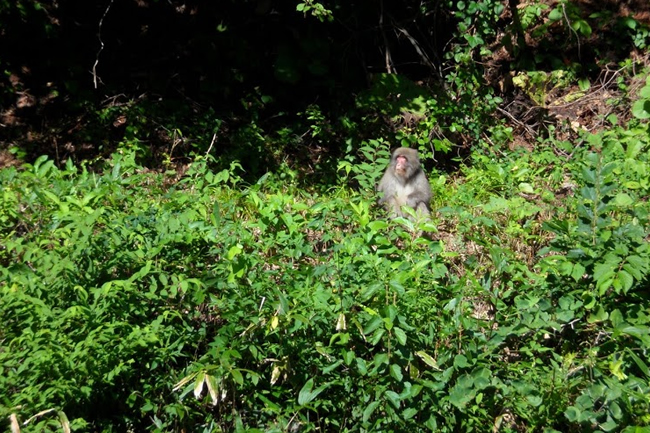Genome research of human and monkey adenoviruses

Division of Bioengineering and Bioinformatics
Research Group of Bioinformatics Laboratory of
Genome Sciences
DC the third year
Laura Pantó (Nationality:Hungary,Year of enrollment:2012)
My research is about the evolution of human and monkey adenoviruses. I chose this laboratory, as research on human adenoviruses was already conducted here, and also for the access to viral samples, which made a strong basement for my research. I came from the field of molecular biology with minor understanding to the informatics. The opportunity in this laboratory is that you can grasp the possibilities about bioinformatics. How to dig up “big data” and find the information you are interested in. During my research I have found an eye pathogen adenoviral strain that was exclusive to Europe. I could find evidence for recombination in this strain, and reconstruct chain of events that led to this virus.
In a field study, samples were collected from the northernmost monkey population of Japanese macaque, near Wakinosawa, Shimokita Peninsula. The monkey population is relatively isolated from other Japanese macaque populations. However, due to an escape from a zoo, a Taiwanese macaque population was established in the area in 1952. These invasive monkey population have been co-existing with the native Japanese macaques, and had the opportunity to hybridize and co-infect each other. The alien species was finally eradicated in 2004. The collected samples were screened for monkey adenoviruses (AdV). None of the samples had adenovirus in it using PCR detection method. Next generation sequencing of the samples detected monkey herpes viruses, but not adenoviruses. Therefore we concluded that the sampled monkey populations are negative for AdV. This finding is important, because other macaque species have various AdV types, and the sampled monkey population have regular interactions with the people living in Wakinosawa. A possible cross infection from either humans, or a new invasive macaque species can result a pathogenic strain in Japanese macaques, and have a negative impact in the population.
Genome research has changed in the last three decades. The first human genome took 13 years to complete. Now it is not more than a week’s work to do (and I learned the technique here). But what I’ve really learned in the genome lab, is this way of thinking: be open minded for new techniques because they will come whether you are prepared for them or not.
The life in the laboratory was different in many ways for me compared to my previous experiences. Students are free to choose their topics, even if it is new for the laboratory. You can assess the diversity of deep-sea plankton, study genome repair mechanisms in model organisms, and observe how genetic diversity is mirrored in blood types of ethnic groups. We are encouraged to design new experiments, and think our own way to solve scientific questions. Weekly laboratory meeting were also new for me. The laboratory gathers for progress reports every week, where we can listen to presentations about how other students do with their research. You can get new ideas and boost each other’s progress this way. During journal clubs we are reading a paper which the presenter found interesting. For me it is also a practice of Japanese, and a chance to hear about topics, I usually wouldn’t read. In each semester, we study on a book (usually in English) that can improve our knowledge on science, chapter by chapter.
The laboratory has good collaborations in my field, in Japan and across the world. With this way I had a chance to co-work with researchers in Japan, Saudi Arabia, Singapore, Sweden, Germany and the States. I could meet some of these researchers in personal, and present my findings by attending in conferences in Osaka, Sweden and the USA.
Life in Sapporo gave me insight to the Japanese culture, and I could meet interesting people. The long and snowy winter challenges both foreigners and Hokkaido people. On the other hand, you can enjoy the season’s sports, like snowboard and ski (ski-jumping for the brave). You can attend Snow Festival in February, and you can warm yourself up with a curry soup, or just visit an open air bath in Jozankei. When spring finally kicks in you can really appreciate the awakening nature, and soon enough you are enjoying the cool summer with barbequing (jinpa), and watching fireworks in July. Foreign students are supported by Japanese lessons, and friendly local people whenever you need help (Tasukete!).

